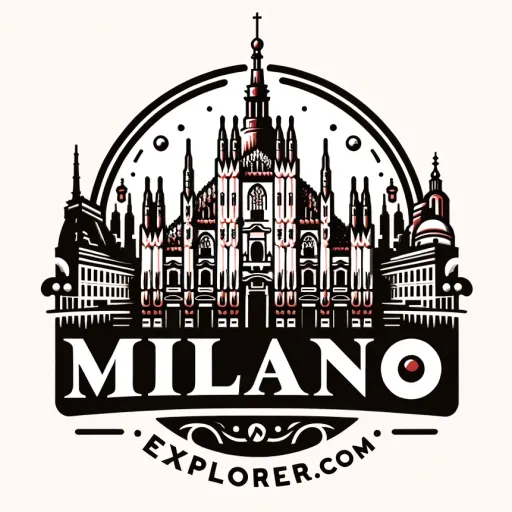Milan, a city steeped in history and architectural grandeur, offers an array of historical sites that narrate tales of its ancient past.
As Italy’s capital of finance and fashion, Milan harmoniously blends modern sophistication with rich cultural heritage.
Visitors to this cosmopolitan metropolis will discover a treasure trove of ancient architecture, representing various epochs and styles.
The crowning jewel of the city—and arguably its most famous historical site—is the imposing Duomo di Milano, a Gothic masterpiece that dominates the skyline and encapsulates the city’s artistic legacy.

Beyond the Duomo, Milan’s historic center is a labyrinth of landmarks each with its own story.
The Sforza Castle, a fortress turned museum, once home to the ruling Sforza dynasty, today houses several of the city’s museum collections.
Similarly, Santa Maria delle Grazie, a UNESCO World Heritage site, is revered not just for its striking Renaissance architecture but also as the custodian of Leonardo da Vinci’s “The Last Supper.”
These sites, along with the famed Galleria Vittorio Emanuele II, offer insights into centuries of history and the city’s evolution from a medieval commune to a contemporary cultural hub.
Top historical sites in Milan
Key Takeaways
- Milan is a city where modern flair and historical significance coexist, with landmarks like the Duomo di Milano offering a glimpse into its illustrious past.
- The city’s architecture and landmarks, such as Sforza Castle and Santa Maria delle Grazie, tell the story of its cultural and political history.
- Exploring Milan’s historical sites provides a comprehensive understanding of its transformation from a powerful medieval entity to a leading center for art, fashion, and innovation.
History and Culture
Milan is a city where every stone tells a story, rich with historical significance and cultural depth. From ancient churches to grand architectural wonders, the metropolitan city of Milan offers a vivid journey through its past.
The Rich Tapestry of Milan’s Past
Milan’s history is as intricate as the detailed stained glass windows of its iconic Duomo, or Milan Cathedral.
As a center of commerce and culture since its founding by the Insubres, a Celtic people, in around 600 BC, Milan saw significant development under Roman rule.
The city’s deep reverence for its old-world charm is evidenced by the immaculate preservation of Leonardo da Vinci’s The Last Supper, housed at Santa Maria delle Grazie.
This UNESCO World Heritage site is not only a pinnacle of religious art but also a testimony to the city’s illustrious past where art and faith intertwine.
Architectural Wonders: From Gothic to Rationalism
Architecture in Milan narrates a long and evolving story, from the Gothic masterpiece of the Duomo to the neoclassical elegance of the Royal Palace.
Milan’s rooftop views from the cathedral unfold a panorama of spires against the modern skyline, symbolizing a city that respects its roots while embracing the future.
The Sforza Castle (Castello Sforzesco), with its robust walls and art collections, evokes the power of the city’s former dynasties.
Meanwhile, the Pinacoteca di Brera boasts a collection that impressively stitches together the city’s cultural fabric, from Renaissance masterpieces to modern art.
The Brera district itself stands as a living gallery, with historical walking tours frequently exploring its picturesque streets.
The architectural evolution continues with works from the 20th century, including the rationalist designs by Piero Portaluppi and the innovative structures by Gio Ponti.
The Museo del Novecento, located in the city’s heart at Piazza del Duomo, focuses on twentieth-century art, where pieces by Italian masters nestle alongside international artworks.
Not far from the bustling streets, the tranquility of the Cimitero Monumentale offers an open-air museum experience, showcasing funerary art that reflects the creativity and spirit of Milan throughout the ages.
Exploring Art and Museums
Milan’s art and museum scene offer a rich tapestry of European culture, combining a deep respect for tradition with a vibrant embrace of modern innovation. Visitors can immerse themselves in Italian artistry and prepare their visit with a curated museum guide.
Masterpieces of Italian Artistry
The Pinacoteca di Brera is a centerpiece for Italian art, boasting a vast array of masterpieces by renowned artists.
Visitors should not miss Leonardo da Vinci’s “The Last Supper,” housed within the walls of Santa Maria delle Grazie. This iconic fresco is a testament to Milan’s artistic heritage and pivotal role in the art world.
Museum Guide: Curating Your Visit
Strategizing a museum visit is crucial to experiencing Milan’s diverse art landscape.
From the historical richness of the Brera district to the modern collections at the Museo del Novecento, one must choose according to their artistic preference—be it Renaissance paintings, contemporary sculptures, or musical instruments.
Exhibiting in the spectacular Galleria Vittorio Emanuele II, museums not only showcase art but are historic sites themselves, blending the past with the present seamlessly.
Fashion and Shopping
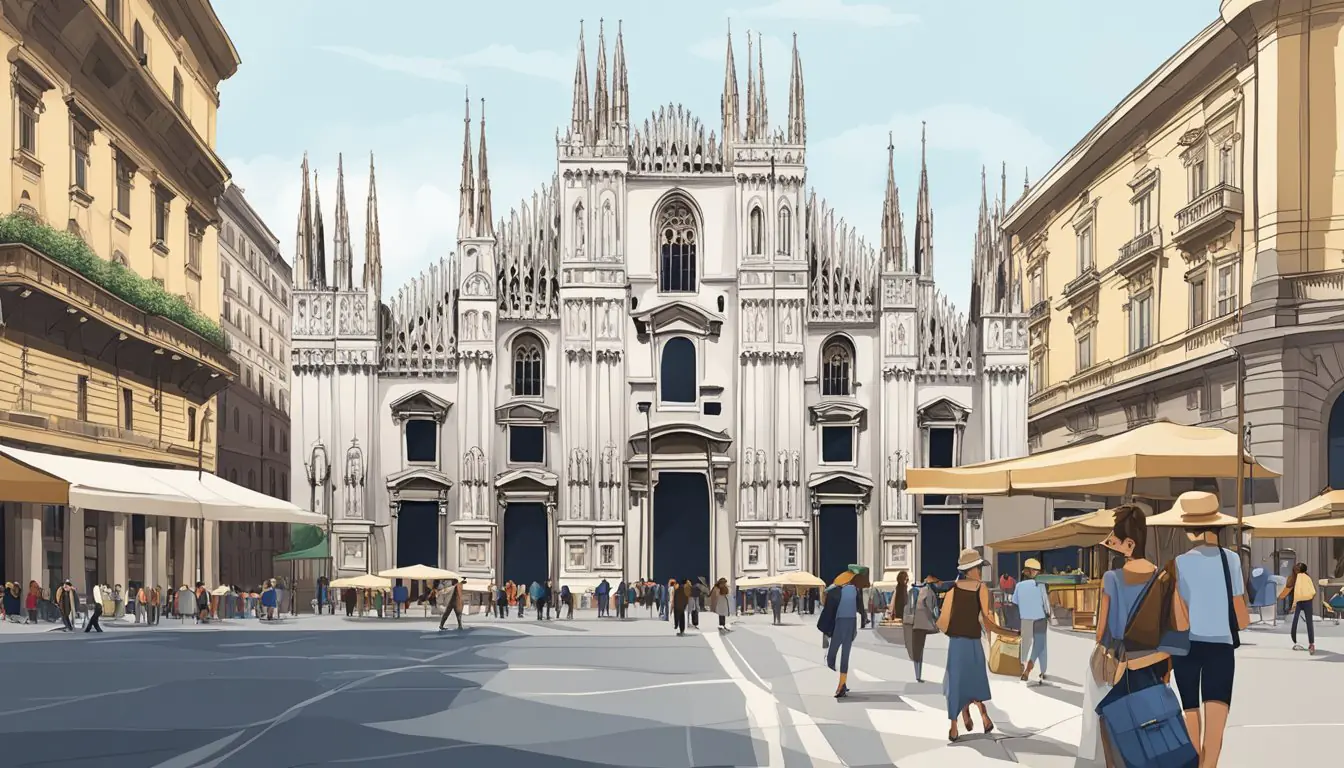
Milan is renowned for its high-end fashion and extensive retail experiences. This section delves into the city’s status as a fashion mecca and provides a curated guide to the best shopping venues.
The Fashion Capital: More Than Just Labels
Milan is often referred to as not just a, but the fashion capital. It’s home to illustrious fashion houses like Prada, Armani, and Versace.
These brands have flagship stores that are more than just retail spaces; they’re emblematic of Milan’s deep-seated fashion culture.
Walking through the city’s streets, one experiences a vivid tapestry of style that extends from the haute couture showrooms to boutique windows.
Ultimate Guide to Shopping in Milan
Begin your shopping journey at the Galleria Vittorio Emanuele II, one of the world’s oldest shopping malls, known for its opulent architecture and prestigious shops.
Here, you will find a range of luxury brands under the mosaic-adorned vaulted glass roof, making it a quintessential stop in Milan.
Next, immerse yourself in the Golden Quadrilateral, which is a vibrant shopping district encompassing several streets that form a quadrilateral.
This area is famed for its fashion boutiques and designer showrooms. It is not just a shopping destination but a landmark of Milanese elegance.
While exploring these areas, visitors can also enjoy the sophisticated ambiance of the many cafés scattered throughout, offering a place to relax and people-watch in this dynamic fashion capital.
Travel and Leisure
https://www.youtube.com/watch?v=2_aDdKT_RVQ&embed=true
The essence of Milan’s allure lies not just in its fashion and design but also in the layers of history evident in its architecture and ancient sites. When planning a trip to this cosmopolitan city of Northern Italy, knowing what to see and how to navigate through its various offerings can elevate the experience.
Planning Your Milanese Getaway
Crafting the ideal itinerary for Milan requires some forethought.
Visitors are advised to download a reliable travel app or secure a map of the city to explore efficiently.
First-time travelers often start with the Milan Cathedral, which stands as a stunning example of Gothic architecture.
For panoramic views of the city, including the surrounding Lombardy region and the distant peaks of Northern Italy, head to the Branca Tower or a rooftop terrace of one of Milan’s elegant buildings.
Strategically plan your visits to Milan’s tourist attractions like the nearby Lake Como or cities such as Venice, Rome, and Florence, easily reached by train.
Consider travel guides that focus on Milan’s cosmopolitan flair alongside traditional elements for a well-rounded understanding.
Discovering the City’s Best Kept Secrets
Milan is more than its grand monuments; it is a city with hidden gems waiting to be uncovered.
Exploring beyond the obvious can lead visitors to quaint neighborhoods where the real charm of the city comes alive away from skyscrapers and bustling tourist spots.
The historical surroundings of Milan, which include the alluring cities of Naples, Venice, and Florence, add to the unique character of the region.
Engage with local guides to delve into these secrets or seek lesser-known attractions that offer unforgettable experiences.
In every knook and corner, Milan presents opportunities for travelers to witness the symbiosis of the ancient with the modern, making it essential to venture out and absorb the city in all its facets.
Entertainment and Nightlife
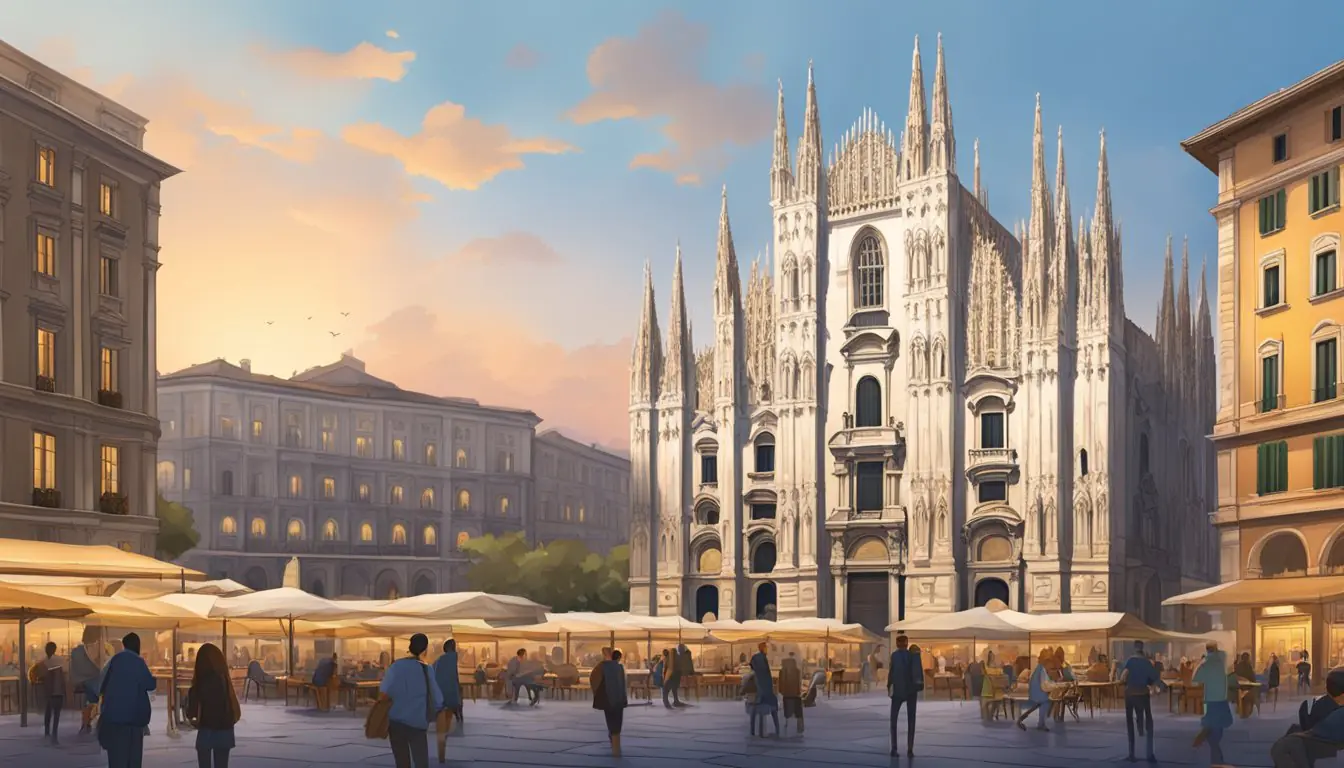
Milan offers a dynamic mix of traditional entertainment and buzzing nightlife, with opera and contemporary spots making it a city that truly never sleeps.
The Best of Milan’s Entertainment Scene
At the heart of Milan’s cultural life is the prestigious Teatro alla Scala, commonly known as La Scala Opera House.
Opera enthusiasts flock here to experience world-class performances in an establishment that breathes history and artistic excellence.
For those planning a trip, it’s worth noting that tickets to La Scala should be booked well in advance due to their high demand and the opera house’s continued global reverence.
Milan’s connection to music extends beyond opera; historical musical instruments are often on display in various venues, inclining visitors to explore the deep musical roots of the region.
Families and solo travelers alike can appreciate the blend of historical and contemporary art in Parco Sempione, which also homes the Triennale museum where the legacy of Italian creativity is showcased.
Nightlife: From Opera to Trendy Spots
As the sun sets, Milan’s nightlife comes to life, from the Arch of Peace in Sempione Park to the evolving district of Porta Nuova.
A well-rounded guide for those who love the night would include gazing at Milan’s skyline from the Branca Tower, followed by experiencing the innovative aperitivo tradition at the historic Camparino bar.
There are countless things to do in Milan at night, from rooftop bars offering panoramic views to the vibrant energy of the city’s dance floors.
Staying true to Milan’s vibrant and eclectic character, the new developments offer a sharp contemporary contrast to the ancient, with buzzing areas like Porta Nuova displaying cutting-edge architecture and modern nightlife amenities.
For those planning their trip, it’s essential to capture both the traditional and modern essence that Milan so seamlessly intertwines.
Architecture and Landmarks
Milan presents a striking blend of historical magnificence and contemporary innovation in its architecture.
The city’s skyline is punctuated with landmarks that tell a story of a rich past and a forward-thinking present.
Landmarks That Define Milan
One cannot mention Milan without acknowledging the Duomo di Milano, a marvel of Gothic architecture.
This cathedral stands at the helm of the city’s architectural treasures with its intricate facades and stunning rooftop terraces.
In the heart of Milan, the Galleria Vittorio Emanuele II represents one of the world’s oldest shopping arcades, flanked by magnificent mosaics and 19th-century glory.
For a taste of Milan’s military history, the robust Castello Sforzesco, or Sforza Castle, showcases fortifications and interiors that have withstood the rigors of time, now housing art collections and museums.
- The Last Supper: Located at Santa Maria delle Grazie, this legendary mural offers an invaluable experience for art historians and visitors alike.
- Teatro alla Scala (La Scala): A benchmark for the opera world, the iconic theatre stands as a testament to the city’s musical heritage.
- The Arch of Peace: Erected in the neoclassical era, it remains a symbol of historical significance and artistic grandeur.
The multitude of churches and piazzas across Milan enrich the city with Renaissance character and social vibrancy, while the Brera district is synonymous with bohemian sophistication, housing the renowned Pinacoteca.
Modern Architecture and Sustainable Designs
Milan’s urban fabric has been a canvas for modern planning and sustainable designs.
The striking Bosco Verticale, or Vertical Forest, is an epitome of green architecture, integrating nature with high-rise living.
Movements such as Rationalism have contributed to the development of modernist landmarks, culminating in structures like the UniCredit Tower, which pierce the skyline as Milan’s tallest skyscrapers.
- Rooftop Terraces: Contemporary buildings offer breathtaking views of Milan, blending the city’s past and future.
- New Planning Initiatives: Milan is constantly evolving, with bold urban projects that prioritize sustainability and community.
In these juxtaposed layers of the time, Milan’s architecture stands as a continual fusion of contemporary lines and historical narratives, making it an essential destination for aficionados of cultural and architectural exploration.
Conclusion
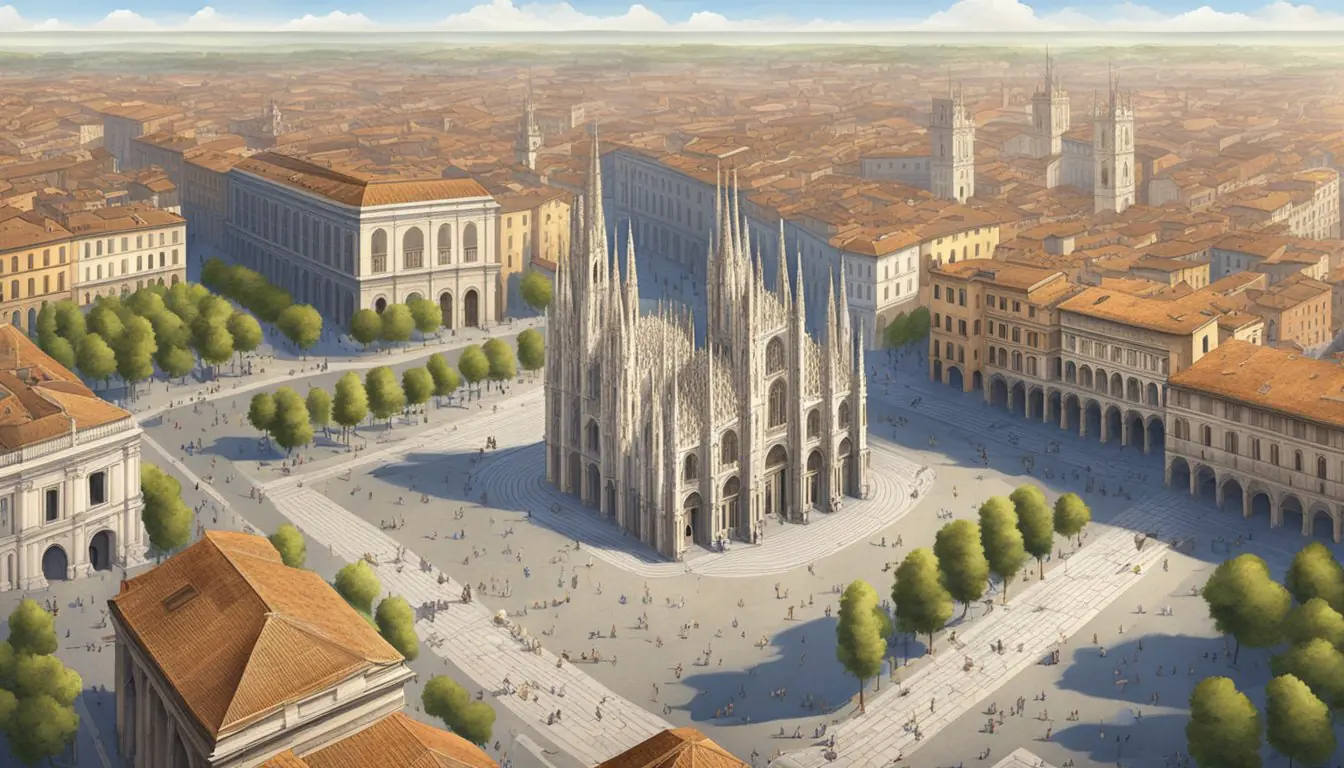
Milan, a city steeped in history, offers an array of architectural marvels that span centuries.
Visitors can immerse themselves in the splendor of the Gothic cathedrals or discover the innovative history at the Museo del Design Italiano.
While the Duomo di Milano stands as a testament to intricate Italian Gothic architecture, the iconic Galleria Vittorio Emanuele II represents one of the world’s oldest, yet most glamorous, shopping malls.
Those with an interest in the profound impact of Italian art and design must not miss opportunities like the Santa Maria delle Grazie, home to Leonardo da Vinci’s “The Last Supper,” or the Teatro alla Scala, an opera house that saturates the air with its rich musical heritage.
For heritage enthusiasts, the UNESCO World Heritage Sites in Milan and Lombardy encapsulate the essence of historical and artistic significance.
Each site serves as a chapter in Milan’s long history, inviting visitors to appreciate the timeless allure of Milan’s ancient architecture through quiet introspection or guided discovery.
Frequently Asked Questions
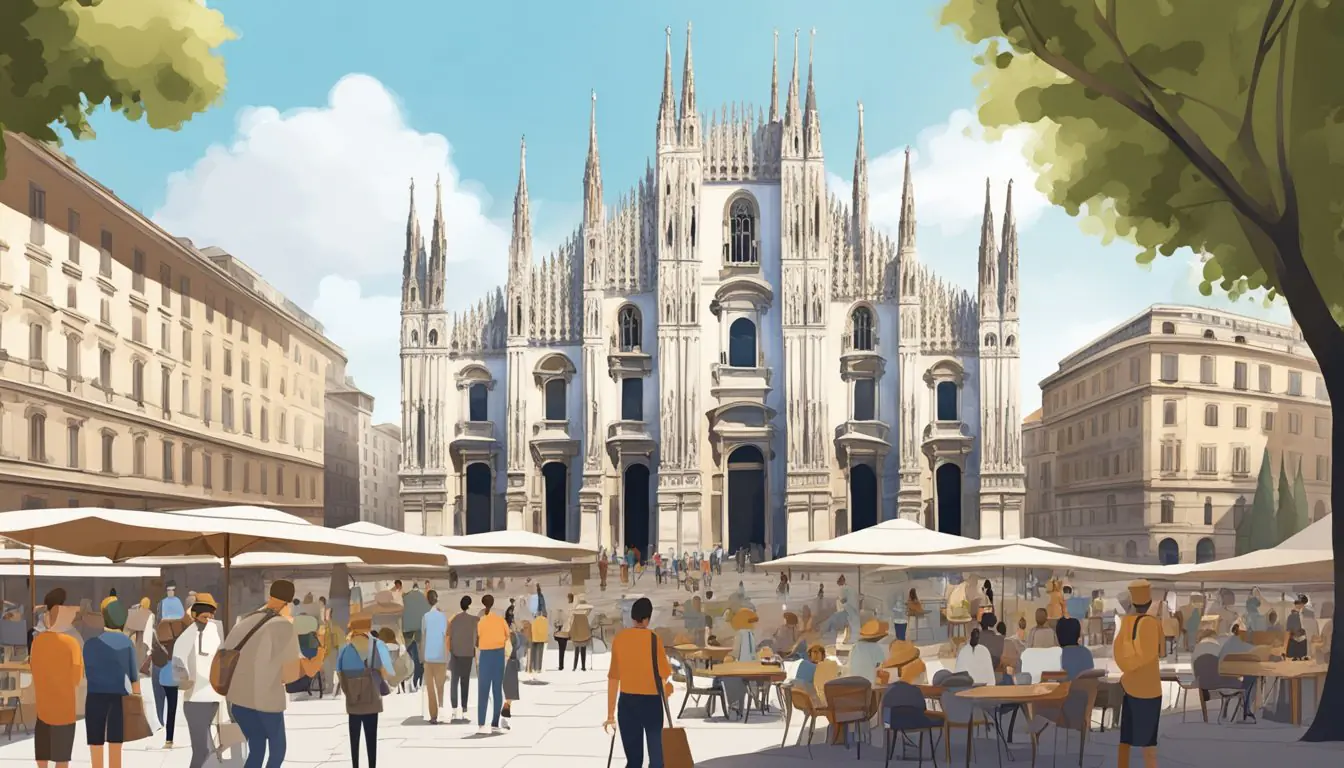
In the heart of northern Italy, Milan boasts a rich tapestry of historical architecture that tells a story of its illustrious past.
Explore ancient sites, marvel at Gothic cathedrals, and walk through centuries-old streets to fully experience Milan’s heritage.
What are the must-visit landmarks when exploring Milan’s historical architecture?
Visitors should not miss the Duomo di Milano, an iconic symbol of Milan with its stunning Gothic facade, and the Galleria Vittorio Emanuele II, one of the world’s oldest shopping malls, acclaimed for its architectural beauty.
Which is the oldest standing building one can visit in Milan?
The Basilica of Sant’Ambrogio, dating back to the 4th century, stands as Milan’s oldest building.
This church is not only a spiritual center but also a gatekeeper of centuries of Milanese and Christian history.
What iconic structures should one include on a walking tour map of Milan?
A walking tour of Milan should definitely include the resplendent Milan Cathedral, the Sforza Castle with its imposing red brick walls, and the Santa Maria delle Grazie, where the legendary ‘Last Supper’ fresco resides.
How can one experience the history of Milan through its ancient sites?
Exploring the Cimitero Monumentale, known for its elaborate tombs and monuments, and visiting the ancient Roman columns of San Lorenzo are immersive ways to experience the layers of history that Milan is built upon.
What notable works of architecture define Milan’s heritage?
Milan’s heritage is richly reflected in the La Scala Opera House, known for its opulent interior and historical performances, and the Sforza Castle, a Renaissance complex which now houses several of the city’s museums and art collections.
Can you recommend the best tour of Milan’s Duomo for understanding its historical significance?
For an in-depth appreciation of the Duomo’s historical significance, the guided tours offer insights into its centuries-long construction. They also provide information about the incredible artwork within and the spectacular views of the city from its rooftop.
